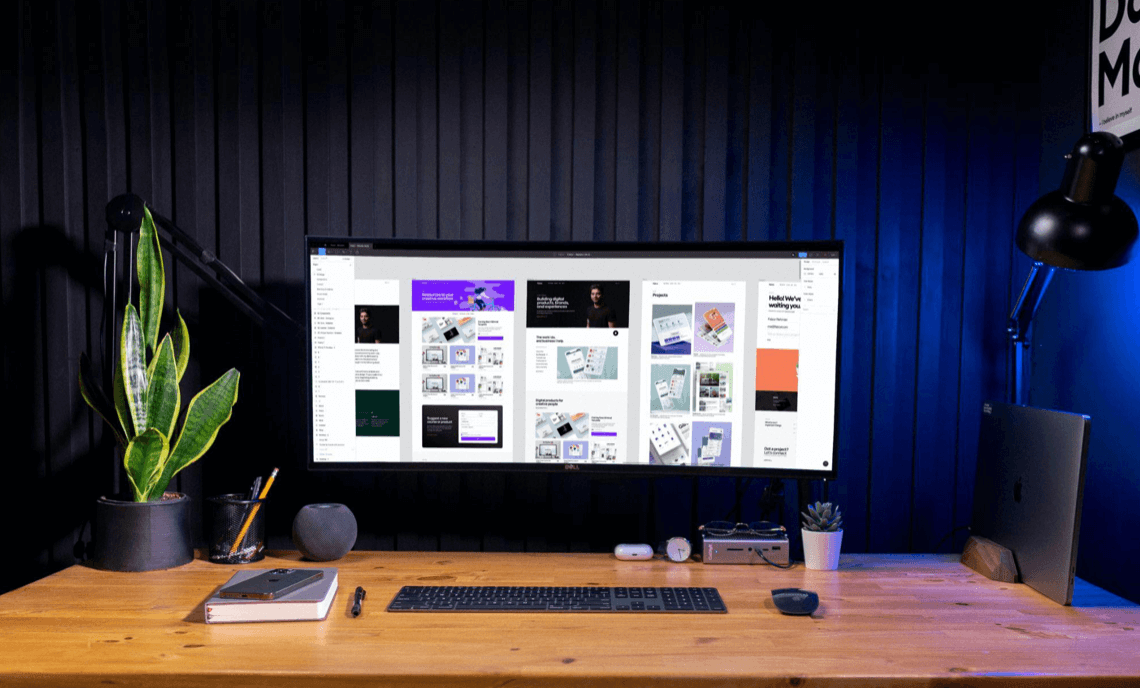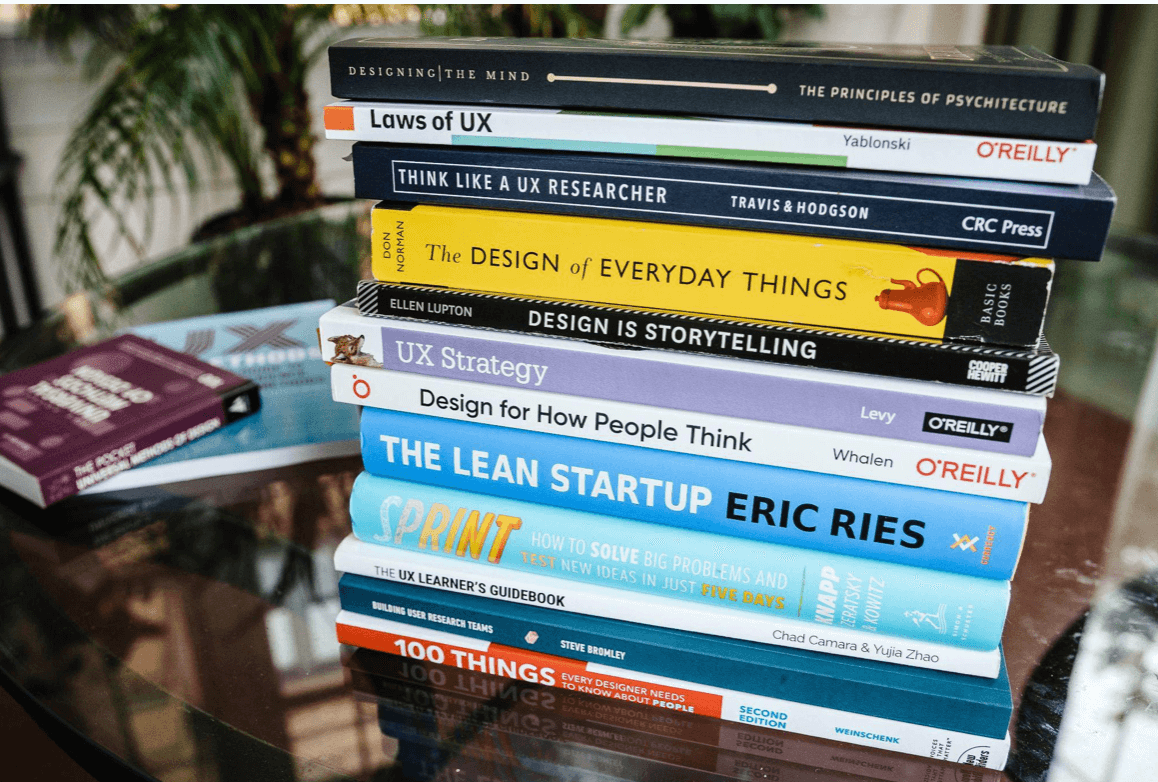Day in the Life of a UX Designer
What It's Like to Work in User Experience
Projects need team members who understand UX Design. But what are these skills and what do UX designers actually do?
Are you curious about what's it like to work as a UX designer daily? Wonder what skills and tools you need to work in user experience? Explore what it takes to be a successful UX/UI designer - learn about daily tasks, the best tools to use and resources you can use to learn more about a job in UX Design. Do you want to work in this fascinating field? Then read on!
Key takeaways
What do UX designers do?
What skills and tools you need?
What kinds of jobs are available?
How much do UX designers make?
How to become a successful UX designer?
What do UX designers do?
UX design is the process of designing products with the user in mind. They work to ensure that all aspects of the product, from the initial concept to the final release, are designed in a user-friendly and satisfying way.
UX design is a relatively new field, and it is constantly evolving. As technology changes and user habits also change, UX designers must adapt their designs to stay ahead of the curve. They must also communicate effectively with other product development team members, such as engineers and marketing professionals to ensure that the final product meets all of the user's needs.
User experience is essential for all products but vital for web and mobile applications. UX designers must have a strong understanding of how users interact with these types of applications. They must also be able to design for various devices, including smartphones, tablets, and desktop computers. UX designers typically have a bachelor's degree in a field such as graphic design, human-computer interaction, or psychology. They may also have experience working in web or software development.
Where do UX designers work?
User Experience Design (UXD) refers to the art and science of creating applications that are easy to use by customers. Virtually everything people use requires UX design. Therefore, UX designers work across most industries and organizations. UX designers can work for one or more companies or on their own as freelancers. A new designer should first consider:
Where they want work
What kinds of teams work best for them
What kind of products they want to focus on
How they want to be employed: full or part-time, corporate or freelance
A UX freelancer will typically be hired by several businesses to complete specific tasks in a short time frame. Many designers enjoy contracting flexibility, and many are able to work on diverse projects. UI specialists often operate as independent contractors. Knowing how, what and who you want to work with is something UX Designers value.
The skills and tools you need to work in user experience
UX design is designing products that provide a good user experience. So, it is essential to consider the user first and foremost before creating anything, as they are the ones who will be using the product. It would help if you had several skills and tools to work in UX design, including research, wireframing, and testing.
Research is essential to UX design because you need to understand the user's needs and wants before designing a product that meets them.
Wireframing is creating a blueprint of the product, and testing ensures that the product works well and that users are happy with it.
Testing focuses on ensuring the the planned solution works as designed, but also that the users accept the solution for use and the technology and requirements such as data work as well. Iterative testing is common in UX Design.
But UX designers need more to be successful. They must also -
be able to think creatively and critically and have strong problem-solving skills.
have empathy for people and understand how humans naturally work.
understand technology as an enabler to natural human ways of working.
consider holistic approaches to solutions to ensure the policies, roles and procedures support the user experience
To be able to address the needed skills, UX designers typically have a background in human-computer interaction, psychology, or graphic design.
They must be able to communicate effectively with both developers and non-technical stakeholders. In addition to strong technical skills, UX designers must have good people skills and work well in team environments. Understanding how projects work is also helpful, since this kind of collaboration is how most UX designers work - as a member of a larger team.
One of the primary soft skills necessary for UX design is acute situational awareness--the ability to adapt and change as needed. Finally, a business background also benefits anyone wishing to pursue a UX design career.
These are just a few skills and tools you need to work in UX design. If you're interested in pursuing a career in UX design, brush up on your skills and learn as much as possible!
Do UX designers need to code?
This question has pondered every designer's mind at some point. The answer is - it depends. The kind of job and industry you choose will generally impact the need for code. Also the size the the team. Generally some code, interfaces and web build will be needed for a UX project. However, this can be done by others on the project, such as the UI role. In addition, more options for low-code or no-code based on new visual technology tools allow for less detailed code knowledge than in the past.
However, there are moments when coding can give you an advantage over others in your field. Before thinking you can only be a UX designer with code skills, look at this article.
Daily tasks of a UX designer
The daily UX design process varies depending on the project they are working on. However, there are some \ tasks that UX designers perform daily. These include:
Conducting user research: It involves conducting interviews, surveys, and focus groups with users to understand their needs and wants.
Designing prototypes: UX designers use tools like Sketch and Adobe XD to design prototypes of their products.
Testing products with users: UX designers test their products with real users to get feedback and improve.
Collaborating with other team members: UX designers work closely with developers, project managers, and other stakeholders to ensure that the product is designed correctly and meets user needs.
Testing prototypes: Once a prototype is created, it's crucial to test it out with users to see if it's user-friendly and meets all of the needs documented during research.
Creating a successful user experience takes a lot of hard work and dedication. However, the daily UX design process can be gratifying. Seeing your final product come to life after user testing and knowing that you played a part in making it user’s lives better is a fantastic feeling.
Is a career in UX design stressful?
UX/UI, like many vocations, can be challenging at times. Professionals who work in this field are often under a lot of pressure. On the other hand, some expert professionals suffer from significant job strain. In some situations, strict deadlines and difficult content requests can be challenging.
Many work stresses have to do with unclear expectations, unrealistic deadlines, and a lack of feedback.
If you want to avoid job-related stress, consider the following:
Set clear expectations with your team from the beginning of the project. This way, there are no surprises later on.
Build in buffer time for feedback and iterations into your project timeline. It will help avoid rushed work and last-minute changes.
Be honest about what you can realistically accomplish in the time frame you have been given. It's better to under-promise and over-deliver than the other way around.
How much do UX designers make?
As of May 2022, the median annual salary of a UX designer in the UX designer job market is $109,761. The profession was also found on Glassdoors' list of the highest-paying entry jobs, ranking 25th out of 60 opportunities.
Of course, salaries can vary greatly depending on experience, location, and the size of the company you work for. But if you're starting your UX designer career, you can expect to make a good salary. And if you're looking to move into a management position, you can expect a significant increase in your pay.
Source: Careerfoundry
What is the difference between junior and senior UX designers?
The distinction--or lack thereof--that some companies make between aspiring and experienced designers can impact your future work prospects.
For instance, junior designers may be tasked with additional responsibilities such as organizing workshops and completing personas or customer journey maps. While juniors might not have the same decision-making power as senior UX designers, they should still be encouraged to contribute their ideas during the design process.
A good designer's UX manager should provide opportunities for developing new ideas about UX design processes and user research.
If you have the goal to move from a junior to a senior designer or into a project management, a good way to increase your chances of success is by finding a mentor or coach to work with you. A mentor is someone outside of your job who can help you focus on your career growth and skill building goals. Coaches are generally on-the-job support to help you learn new skills in the context of your role. Find out more about finding a mentor here.
How to become a successful UX designer
Becoming a successful UX designer is not an easy task. There are many skills and traits that you must possess to be successful. In this section, we will discuss four of the most important ones
Creativity
A successful UX designer must be able to come up with new and innovative ideas. They must be able to think outside the box and come up with both user-friendly and aesthetically pleasing solutions. A successful UX designer is both creative and analytical, this will help to identify user problems and come up with solutions that are both user-friendly and effective.. Check out this video on ways to increase your creativity.
Strong communication skills
A successful UX designer must be able to communicate their ideas clearly and effectively. They should also be able to listen to feedback after user testing and user research and consider it. They must be able to explain their designs to both developers and clients. This includes sharing an idea in an inspiring way. Check out this video on how to share a compelling story and seeing a way to structure story boards to help you create clear and compelling messages.
Organizational skills
A successful UX designer must be organized and detail-oriented. They must be able to manage their time effectively and meet deadlines. They should also be able to keep track of multiple projects simultaneously and stay calm under pressure. Being goal oriented is especially important if you are working freelance or with little day to day guidance. A strong work ethic is one of the essential qualities a UX designer can possess. If you're not willing to manage your work to deadlines, put in the extra hours when necessary, or rework to make the product ‘perfect’ you'll never reach your potential as a designer. Passion and determination are essential if you want to be successful in this field. Check out this video on goal setting for more insights.
If you possess these three traits, you have what it takes to become a successful UX designer. So go out there and start designing!
Resources for learning more about user experience
Many resources are available to learn about user experience, including books, articles, websites, and courses. Here are five of the best resources for learning more about user experience.
Books
The Design of Everyday Things byDon Norman - This book is a classic in user experience. It provides a great introduction to the concepts of user experience design.
The Elements of User Experience by Jesse James Garrett - This book is an excellent resource for understanding the different elements of user experience design and how they work together to create a successful user experience.
UX Research 101 by UserZoom - This ebook helps you understand the process of research and how to focus on the most important aspects needed for UX design.
Articles
"The UX of Currency" by Don Norman - This article provides an excellent overview of the user experience of currency and how it can be designed to meet users' needs.
"The Usability of Passwords" by Jakob Nielsen - This article discusses the usability of passwords and how to design them to be practical and user-friendly.
Websites
The UX Review - This website is an excellent resource for reviews of user experience, with a focus on mobile apps.
User Testing - This website allows you to test your product with real users and get feedback on your product's user experience.
Courses
User Experience Design Fundamentals from Udacity - This course is an excellent introduction to the basics of user experience design.
Interaction Design Specialization from Coursera - This is a comprehensive guide to interaction design. It covers a wide range of topics related to user experience.
Hopefully, these resources will help you to learn more about user experience and how to design products that provide a great user experience.
Do you plan to look for a job working in UX or UI? Please, leave a note in the comments below! I’d love to hear from you or answer your questions.










